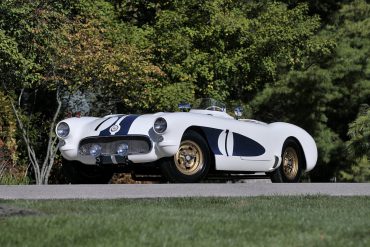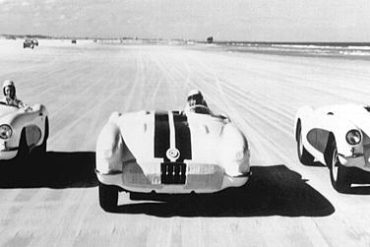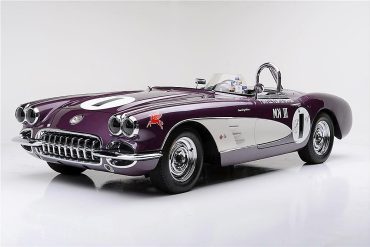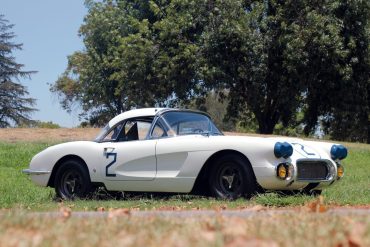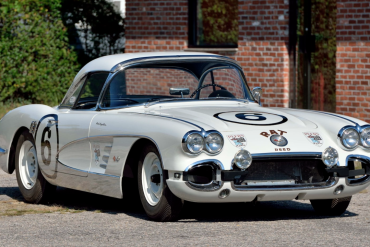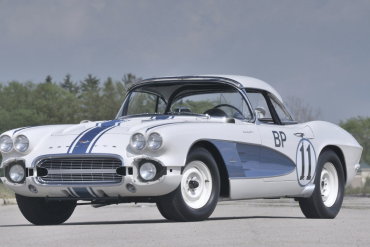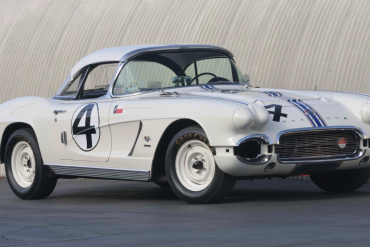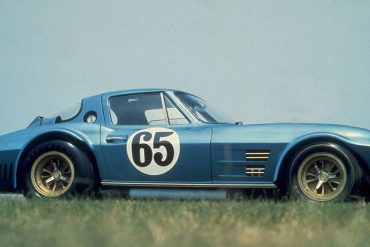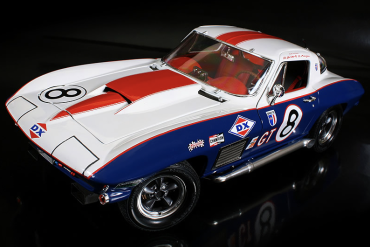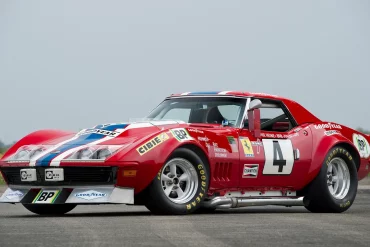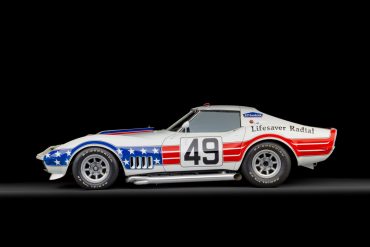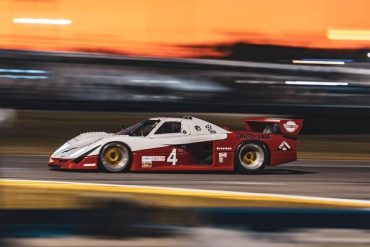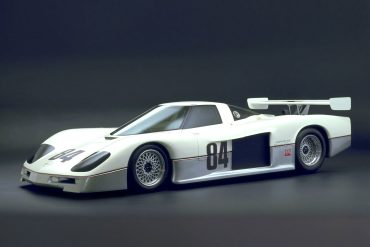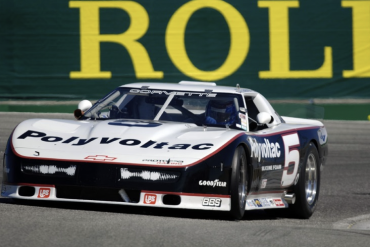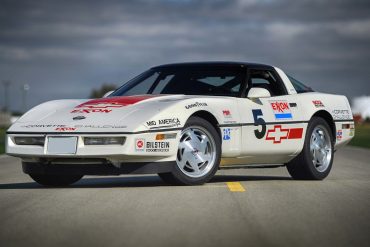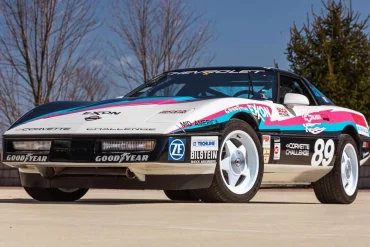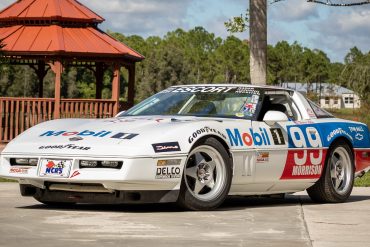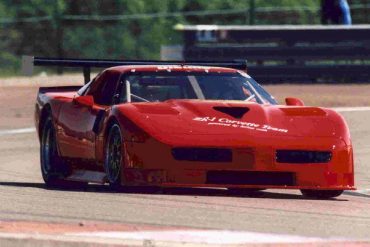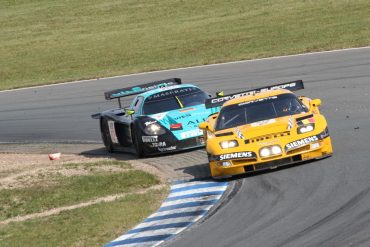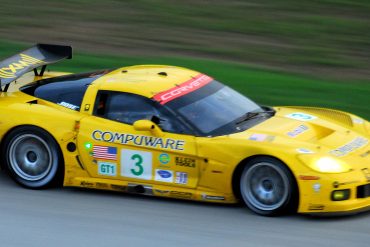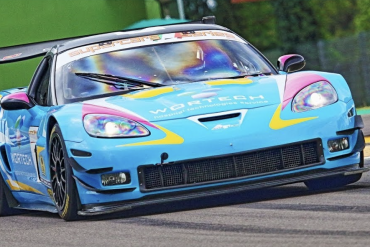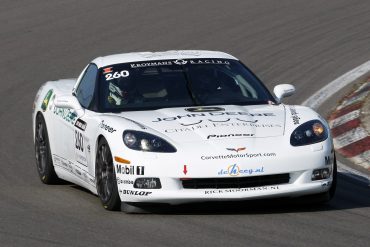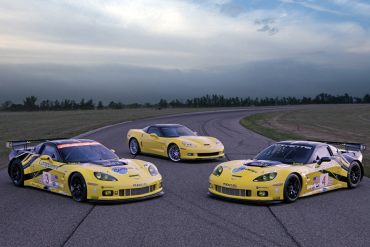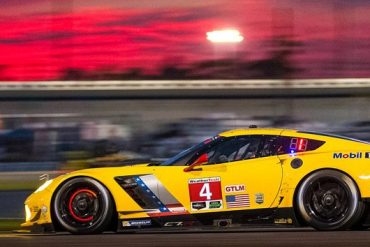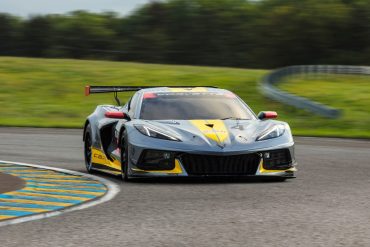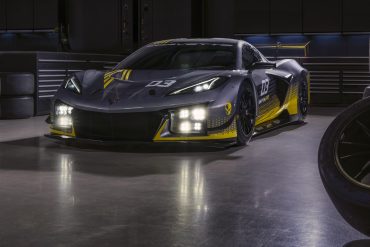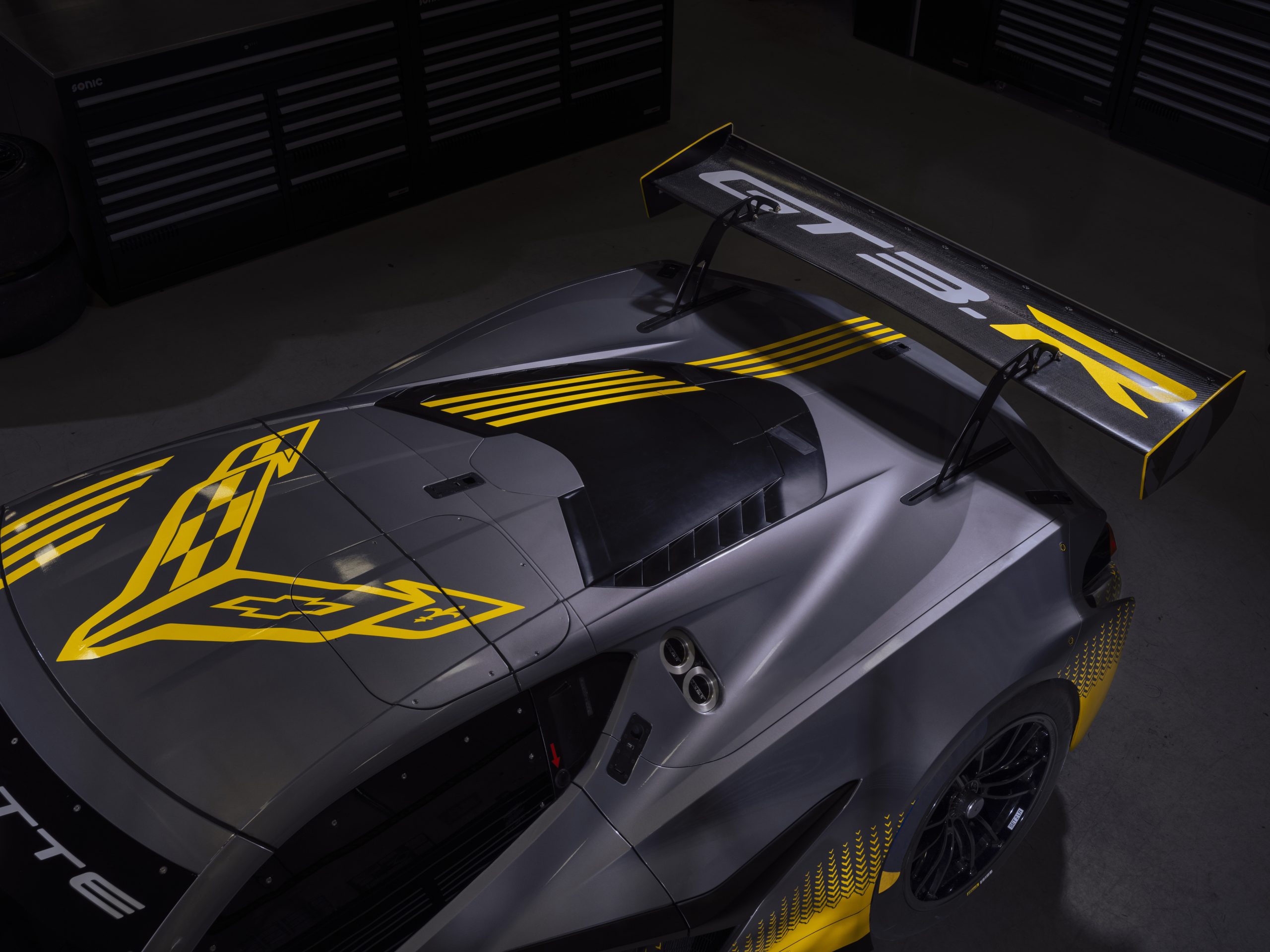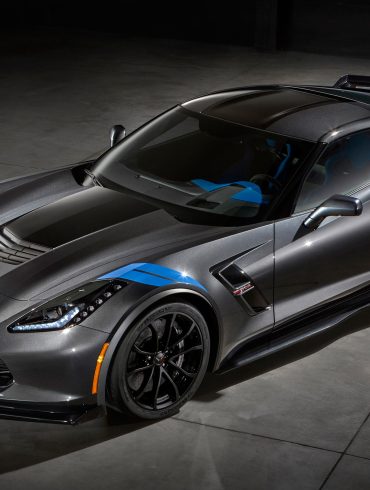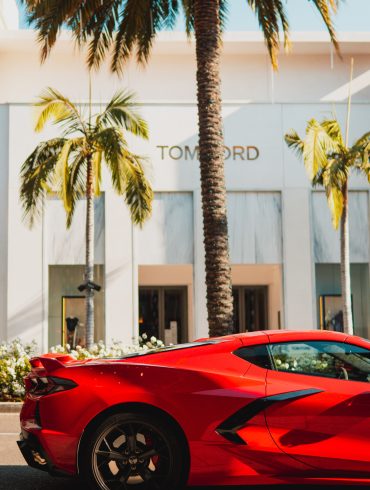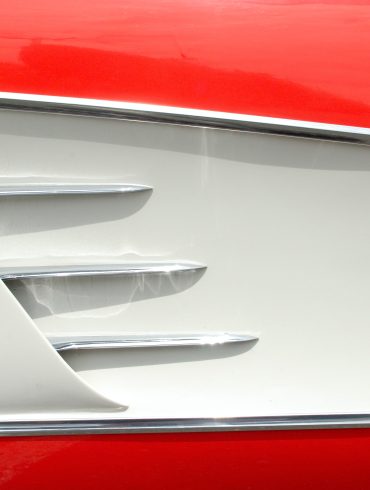In 1956, Ed Cole, then General Manager of Chevrolet, decided Corvette could be saved from extinction due to lagging sales by promoting the car as a performance car which could be raced in production classes. The first of these Corvettes was to debut at Daytona Beach for acceleration and top end speed trials, the 12 hour race at Sebring, and also possibly Le Mans.
Corvette Race Cars
The History of Chevrolet Corvette Race Cars. Every Important Corvette Race Car In Detail.
C1 Era / C2 Era / C3 Era / C4 Era / C5 Era / C6 Era / C7 Era / C8 Era
Given Zora Arkus-Duntov’s background, there was no way Chevrolet’s Corvette wouldn’t be raced. A veteran of the 24 Hours of Le Mans in Allards and Porsches, Duntov set the Plastic Fantastic on a philosophical track that would later bring the Vette class honors in the French classic—and at many race tracks around the world. The Briggs Cunningham–entered 1960 Corvette had to have its engine packed with ice to win its class and finish eighth overall in the 1960 24 Hours of Le Mans. We have also seen lows, like the cancelling of the 1963 Grand Sport, an awesome engineering feat that fell victim to Detroit politics.Drivers Dick Guldstrand and Bob Bondurant drove a big-block Corvette from the airport near Paris to Le Mans for the 1967 24-hour race. The car proved potent, able to top 170 mph on the Mulsanne straight. L88 Corvettes were kings in their days, taking the 1969 and 1973 SCCA National A Production titles, a second place in the 1969 12 Hours of Sebring and winning the GT class in the 1969 and 1970 24 Hours of Daytona. We have also seen a Corvette only series known as the Corvette Challenge series which brought some very tight racing in 1989, the winner in the series that year being Bill Cooper in this No. 3 Corvette. The cars were fitted with the then-new ZF six-speed transmission and the FX3 adjustable suspension. Fast forward to 2001 and the launch of the C5.R and things get really interesting. Pratt & Miller built these epic machine for the American Le Mans Series and they raced in four 24 Hours of Le Mans. In the 2001 season the C5.Rs took six wins in 10 races with an overall win in the 24 Hours of Daytona. Corvette has a rich history of amazing race cars and this page is dedicated to them.
Want to get up to date on the latest in Corvette Racing? Check our Corvette Racing Hub.
C1-Era Corvette Race Cars
Well before we saw things like the Z06 package on the options list, hot-rodded Corvettes still found their way to success on race tracks everywhere. Even in the early years, many Corvettes has success in national club racing. But it was the more unique forms of motorsport like speed trials on Daytona Beach that saw the creation of some pretty cool Corvette race cars. Of the Chevrolet roadster drivers, Betty Skelton was the star. Known as “The Lady of Firsts,” she was the first woman to pace the Daytona 500 and the first woman to be inducted into the Corvette Hall of Fame. Skelton set three women’s land speed records on the Daytona Beach course. In 1960, Zora Arkus-Duntov and American privateer Briggs Cunningham teamed up to enter Corvette in its first 24 Hours of Le Mans. They used three 1960 Corvettes with 283-cubic-inch Fuelies, heavy duty brakes, a beefier suspension, and limited-slip differentials. At the conclusion of 24 hours, one of the three had upset the field of Euro counterparts Ferrari, Aston Martin, and Porsche to win the GT class—and finish eighth overall. Corvette’s stellar rookie run at Le Mans would set the tone for future landmark performances.
C2-Era Corvette Race Cars
Perhaps inspired by the performance at Le Mans in 1960, Zora commissioned and oversaw the development of a lightweight, ultra-powerful apex-eater called the Corvette Grand Sport. His original plan was to build 125 lightweight homologation models to satisfy road racing’s GT rulebook. But in 1963, the program ran head-on into GM’s self-imposed racing ban and had to cease production on the racers. Still, several made it through, and of the finished Grand Sports, Zora and his team distributed them to privateer teams. We can't talk about C2-era Corvette race cars without mentioned the Corvette L88. The L88 package included many competition components which included a M22 transmission, large disc brakes, upgraded suspension and an aluminum head 427. There were several L88s that raced with success during those years and for many more to come.
C3-Era Corvette Race Cars
Due to the sporty nature of the C3 Chevrolet Corvette, it was often converted into a Race Car. The C3 has a proud racing history that spans a wide range of motorsports disciplines, including endurance, drag, and sports car racing. These cars were race not only by factory and professional teams, but by a wide range of grassroots motorsports fans, and everything in between. Detroit-born brothers John and Burt Greenwood were Corvette’s motorsports strongmen during the 1970s and 80s. John grew up street racing down the Motor City’s Woodward Ave in his 1964 Corvette, before eventually turning to SCCA competition where he won early and often. The duo’s most famous creations were their wide-body third-gen Corvettes which tap-danced between rulebook margins.
C4-Era Corvette Race Cars
It may come as a surprise that a mid-engine Corvette raced in professional road racing competition over three decades before the first mid-engine Corvette road car was born. GM partnered with Lola to create a purpose-built tube frame sports car draped in a very loose interpretation of fourth-gen Corvette bodywork. Save for some stickers and maybe the nose, it was a stretch to call the beast a Corvette. Beginning in 1984, the IMSA grid featured a couple of these GTP racers with car-specific powerplants. Lee Racing campaigned a 5.7-liter V-8 block, while Hendrick Motorsports (pictured here) used a 3.4-liter turbocharged V-6 in its Goodwrench-liveried ‘Vette. In 1988, the Sports Car Club of America (SCCA) outlawed all Showroom Stock Corvettes from its racing events. The reason? The Vettes had not been beaten in three years of racing against the world's best sports cars, and their competitors complained so loudly that the sanctioning body finally had to act. To keep Chevrolet happy, SCCA officials devised a marque-specific race series for the Corvette. Chevy signed on and named the series the Corvette Challenge. The Challenge ran for two years-1988 and 1989.
C5-Era Corvette Race Cars
In the early-1990s racing manager Doug Fehan convinced GM to campaign its C5 Corvette—which was mid-development—and eventually enlisted car builders Pratt & Miller to transform the develop the model into a purpose-built road racer. The car debuted on the grid of the 1999 Rolex 24 Hours of Daytona. Two years, one first Le Mans debut, and a first win later Corvette Racing was back at the Florida high banks, this time, with “the Intimidator” Dale Earnhardt and his son splitting driving duties with team regular Andy Pilgrim. That year was also special for the Corvette crew, as the sister car claimed first overall.
C6-Era Corvette Race Cars
The Corvette C6-R race car debuted at the 12 Hours of Sebring in March 2005. The two-car, factory-backed Chevrolet sports car program competed in the production-based GT1 class (formerly GTS) of American Le Mans Series as well as the legendary 24 Hours of Le Mans in France. It was the most technically advanced sports car ever developed by GM, culling years of experience from the Corvette C5-R as well as the advancements brought forth from the next-gen Corvette C6 and Z06.
C7-Era Corvette Race Cars
The C7.R Corvette by Pratt & Miller is one of the winningest race cars in modern history. Explore what makes this Corvette a winner on race day, and discover the connection between the C7.R and the seventh-generation Chevy Corvette Z06. At the core of the C7.R Corvette is a direct carry-over from its predecessor - the same 5.5 liter engine that was developed during the C6.R's successful tenure in both the American Le Mans series and at The 24 Hours of Le Mans.
C8-Era Corvette Race Cars
Another Pratt & Miller-built beast, the C8.R debuted in 2020, in conjunction with the release of the mid-engine production car. Featuring a race version of the LT6 small block, the 5.5-liter naturally aspirated V8 propelled the novel car to six class victories in its debut season. A year later, the mid-engine racer won its class victory in the Rolex 24, sweeping the top two steps of GT competition.


